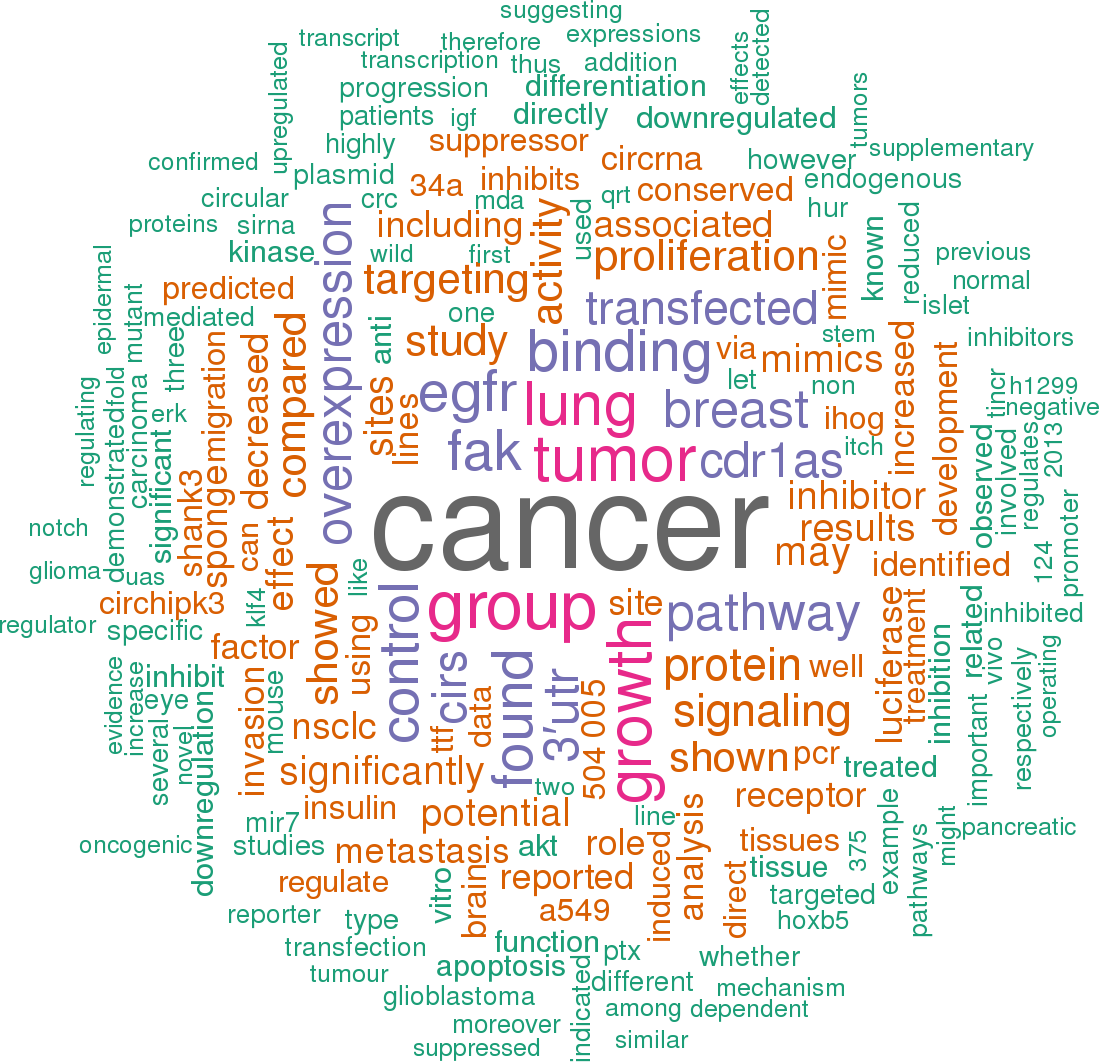Accession
MI0000263
Symbol
HGNC:
MIR7-1
Description
Homo sapiens
hsa-mir-7-1 precursor miRNA
Summary
Caution, this is an AI generated summary based on literature. This may have errors. ?
MIR7-1 is a microRNA precursor located within the last intron of the HNRNPK gene on chromosome 9, which is a key player in the regulation of various metabolic traits and is believed to be the most highly expressed source of mature miR-7 [PMC9522793; PMC4600152].'>PMC4600152].. The expression of MIR7-1 is driven by HNRNPK's promoter, and it is subject to regulation by several transcription factors, including c-Myc, which directly stimulates MIR7-1 promoter activity [PMC9522793; PMC4600152].. Additionally, RELA has been confirmed to bind directly to the MIR7-1 promoter region [PMC4600152]. The transcription factor FOXP3 also positively regulates miR-7 expression in breast cancer [PMC4600152]. In contrast, QKI proteins have been shown to inhibit miR-7 biogenesis from MIR7-1 and bind intronic RNA sites near its locus affecting cancer progression [PMC7918072; PMC5693031].. Moreover, genetic variations near MIR7-1 have been implicated in gene regulation within brain regions such as the frontal cortex and hippocampus [PMC6071032]. Lastly, alterations in MIR7-1 expression have been associated with diseases including neurodegenerative disorders and various cancers as well as with environmental factors such as tobacco exposure during pregnancy affecting foetal development [PMC9571148].
Literature search

342 open access papers mention hsa-mir-7-1
(2084 sentences)
(2084 sentences)
Sequence
936086
reads,
6676
reads per million, 153 experiments
uuggauguuggccuaguucugugUGGAAGACUAGUGAUUUUGUUGUUuuuagauaacuaaaucgaCAACAAAUCACAGUCUGCCAUAuggcacaggccaugccucuacag
.((((.((((((((.((.((((((((.(((((.(((((((.(((((((((((....)))))..)))))))))))))))))).)))))))).)))))))).)).))))...
.((((.((((((((.((.((((((((.(((((.(((((((.(((((((((((....)))))..)))))))))))))))))).)))))))).)))))))).)).))))...
Structure
--u u - a u A A U -- a ugga gu uggccu gu cugugUGG AGACU GUGAUUU GUUGUU uuuag u |||| || |||||| || |||||||| ||||| ||||||| |||||| ||||| aucu cg accgga ca gguAUACC UCUGA CACUAAA CAACag aaauc a gac c u - c G - - cu a
Annotation confidence
High
Do you think this miRNA is real?
Comments
This human miRNA was predicted by computational methods using conservation with mouse and Fugu rubripes sequences [1]. Expression of the excised miR has been validated in zebrafish, and the 5' end mapped by PCR. Landgraf et al. confirm expression in human [2]. The mature sequence shown here represents the most commonly cloned form from large-scale cloning studies [2].
Genome context
chr9: 83969748-83969857 [-]
Disease association
hsa-mir-7-1 is associated with one or more human diseases in the Human microRNA Disease Database
| Disease | Description | Category | PubMed ID |
|---|
Mature hsa-miR-7-5p
| Accession | MIMAT0000252 |
| Description | Homo sapiens hsa-miR-7-5p mature miRNA |
| Sequence | 24 - UGGAAGACUAGUGAUUUUGUUGUU - 47 |
| Evidence |
experimental
cloned [2-3] |
| Database links |



|
| Predicted targets |



|
Mature hsa-miR-7-1-3p
| Accession | MIMAT0004553 |
| Description | Homo sapiens hsa-miR-7-1-3p mature miRNA |
| Sequence | 66 - CAACAAAUCACAGUCUGCCAUA - 87 |
| Evidence |
experimental
cloned [2] |
| Database links |



|
| Predicted targets |



|
References
|




